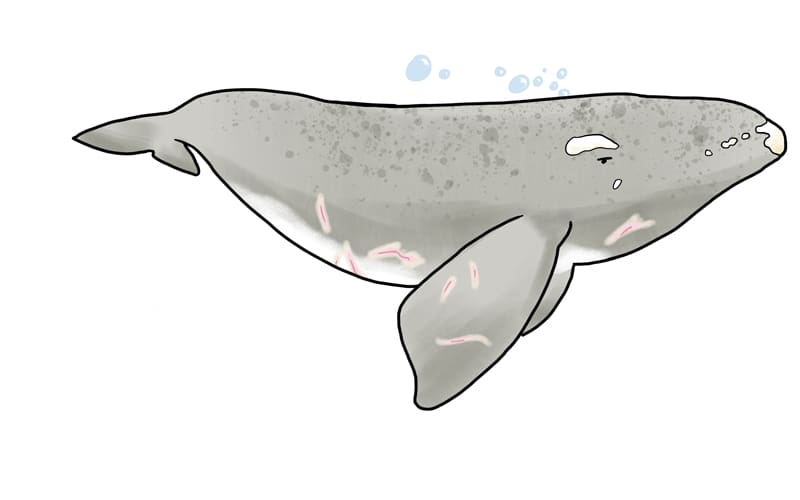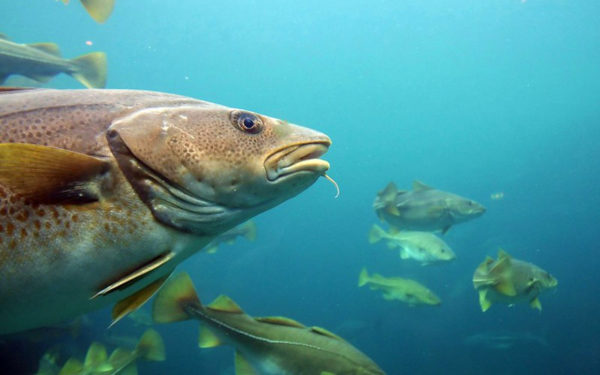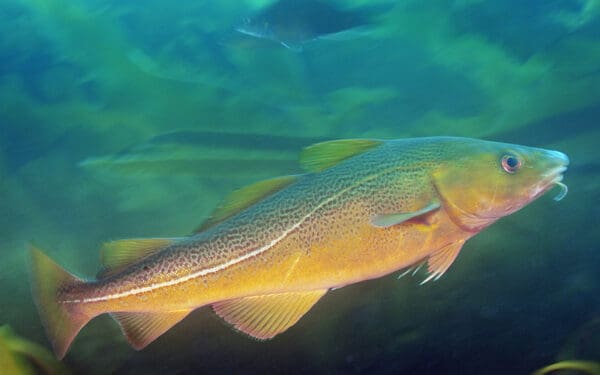
North Atlantic right whales are critically endangered. Photo: Steve Meese via Creative Commons 2.0
With fewer than 440 North Atlantic right whales remaining in the world, this iconic whale is on the brink of extinction. Deadly entanglement in commercial fishing gear, such as lobster rope, is one of the primary threats to the right whale’s survival. And to fully understand whether the lobster fishery can operate without jeopardizing the future of right whales, we need a new Biological Opinion.
Biological Opinion Basics:
- A Biological Opinion is one of the ways that the Endangered Species Act protects listed species.
- Actions overseen by a federal agency – anything from a forestry management plan to a dredging project – require a determination of whether the action “may affect” a listed species in the area.
- If the action is “likely to adversely affect” a listed species, then the agency taking action must formally consult with the agency in charge of protecting that species (either the National Marine Fisheries Service or U.S. Fish and Wildlife Service). The report at the end of this process is called a Biological Opinion.
- If the consulting agency determines the activity will jeopardize the survival of the species, it must also provide reasonable alternative actions that avoid jeopardy in the form of an Incidental Take Statement.
How Does a Biological Opinion Work?
Biological Opinions are required by the Endangered Species Act under certain circumstances. Specifically, Section 7 of the Act requires federal agencies to ensure that their actions, including projects they fund or authorize, do not jeopardize the continued existence of any species listed as threatened or endangered under the law.
Before federal agencies fund projects or take actions that could harm an endangered species, they must decide whether their action will affect listed species. If so, the agency must consult with either the U.S. Fish and Wildlife Service or the National Marine Fisheries Service (whichever “Service” is responsible for managing the species).
If the Service determines that an action is “likely to adversely affect” a listed species, then it must do a deeper analysis of how the action will affect the species and its habitat. This analysis helps determine how the agency could manage the activity so it doesn’t harm species. The Biological Opinion is the final document produced at the end of this consultation and usually includes recommendations to help the species avoid jeopardy and recover. Sometimes, it will allow for a certain number of potential deaths, called “takes,” that can happen without causing the species’ existence to be jeopardized. Those are specified in an Incidental Take Statement.
A Biological Opinion doesn’t replace the recovery plan for an endangered species (that’s another story), but it is an important part of how the Endangered Species Act protects our most vulnerable species.
What Does this Mean for Right Whales?
North Atlantic right whales have been on the Endangered Species List since 1970 and are also protected under the Marine Mammal Protection Act. Right whales are often called “urban” whales because their main route from their southern calving grounds to their northern feeding grounds is through the heavily developed coastal waters of eastern U.S. Their habitat includes areas in the Gulf of Maine close to shore that are littered with lobster pots. All known recent deaths – and there have been an unusually high number in the past couple of years – are caused by human activities, including entanglement in lobster fishing gear.
The lobster fishery is managed by the National Marine Fisheries Service (NMFS) – which is the same agency that Congress designated to protect right whales. Needless to say, asking the agency to do checks and balances on itself doesn’t work well.
The most recent Biological Opinion for the lobster fishery acknowledges that the fishery will kill or seriously injure more than three right whales per year, but it does not include an Incidental Take Statement. In other words, it offers no alternatives to guide the lobster industry on how not to kill or injure these critically endangered creatures.
That’s illegal.
The Biological Opinion also assumes that the right whale population is increasing. We know now that that assumption is wrong. In fact, at least 20 right whales died in in the past two years, about 4 percent of the entire population. No new calves were sighted this year. New science shows the population has actually been decreasing since 2010, and that chronic entanglements have contributed to the lack of calves.
The lobster fishery already has millions of traps in the water, all attached by heavy lines to buoys floating on the surface. And it is expanding farther and farther offshore into waters traveled by right whales, creating a deadly obstacle course. Research shows that more than 80 percent of whales get entangled in gear at least once in their lifetime; for most whales, it’s more. Allowing the lobster industry to continue to operate without an updated Biological Opinion based on the latest science will only put whales in greater jeopardy.
NMFS technically initiated a new Biological Opinion last October following the deadly 2017 season, but the agency is dragging its feet to complete it. Instead, NMFS continues to authorize and manage the fishery based on the old Biological Opinion that we know is outdated and false. This needs to stop, now.
How is CLF Taking Action?
In February, CLF sued NMFS for violating both the Endangered Species Act and the Marine Mammal Protection Act by relying on a flawed Biological Opinion. We know – and NMFS knows – that the science on right whales has changed. We are asking NMFS to update the Biological Opinion based on this updated research, and to ensure it includes the legally required Incidental Take Statement. Otherwise, the lobster fishery can’t ensure their operations won’t jeopardize the continued existence of right whales.
As our suit winds its way through federal court, we’re asking for emergency action to avoid and reduce deaths of right whales. Solutions exist – increased aerial surveys so that fishing gear can be temporarily removed when right whales are spotted, improved fishing gear markings and reporting so that managers can immediately identify problematic gear, mandatory speed restrictions to prevent ship strikes, and the use of ropeless or buoyless gear to reduce entanglements.
The lobster industry and right whales can co-exist. NMFS has the legal authority to do more to save right whales. Now all it needs is the courage – or a court order – to act.



